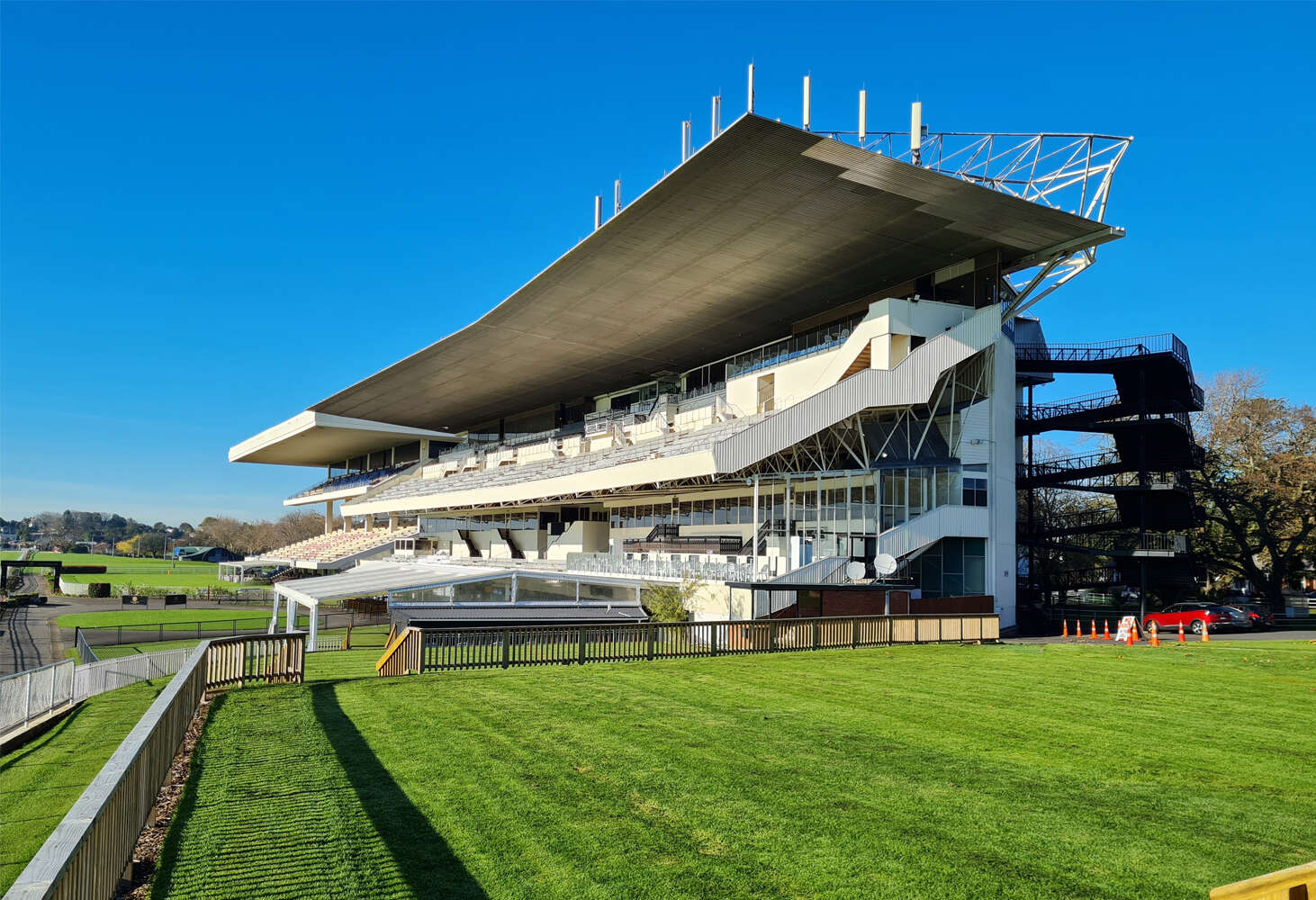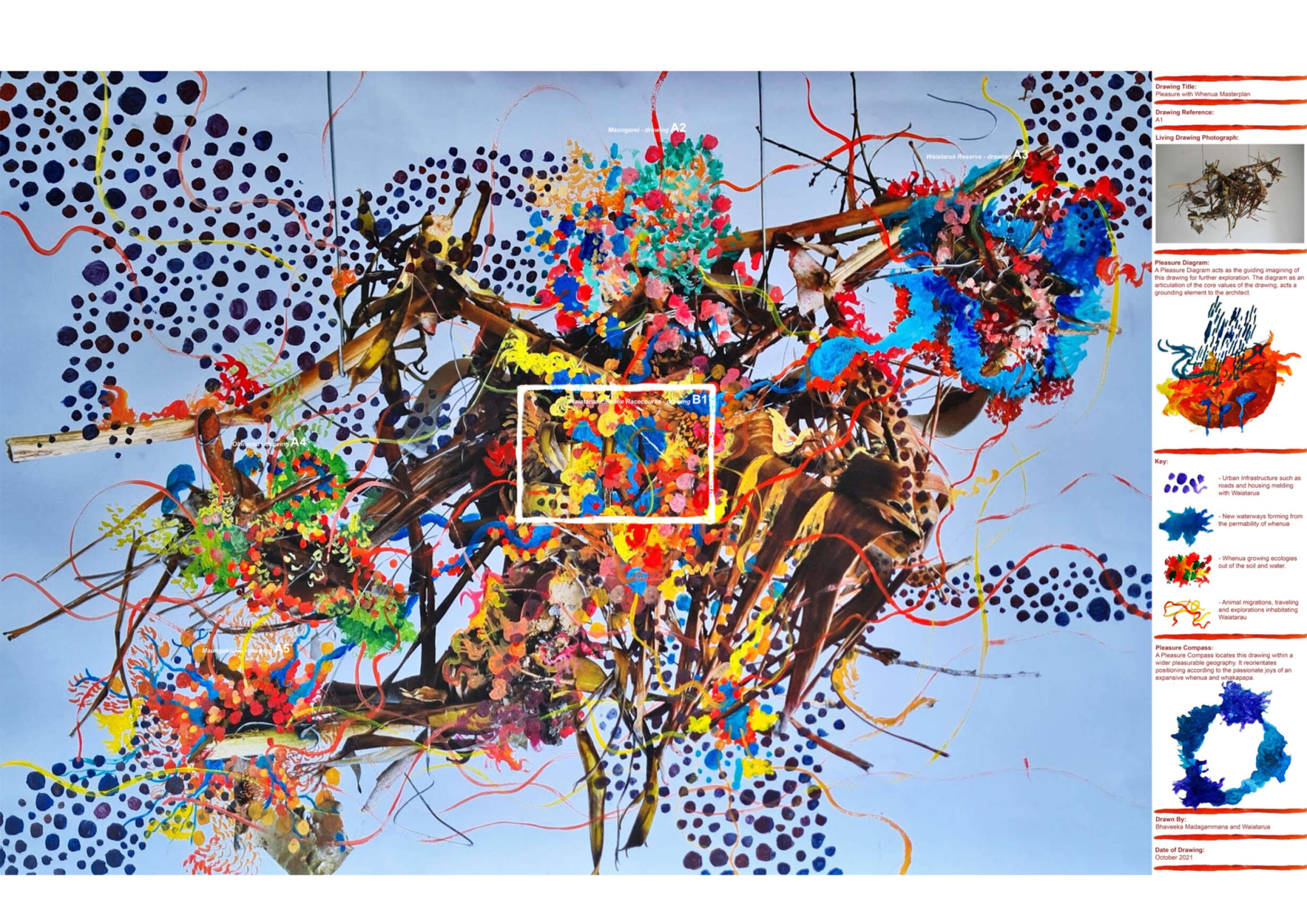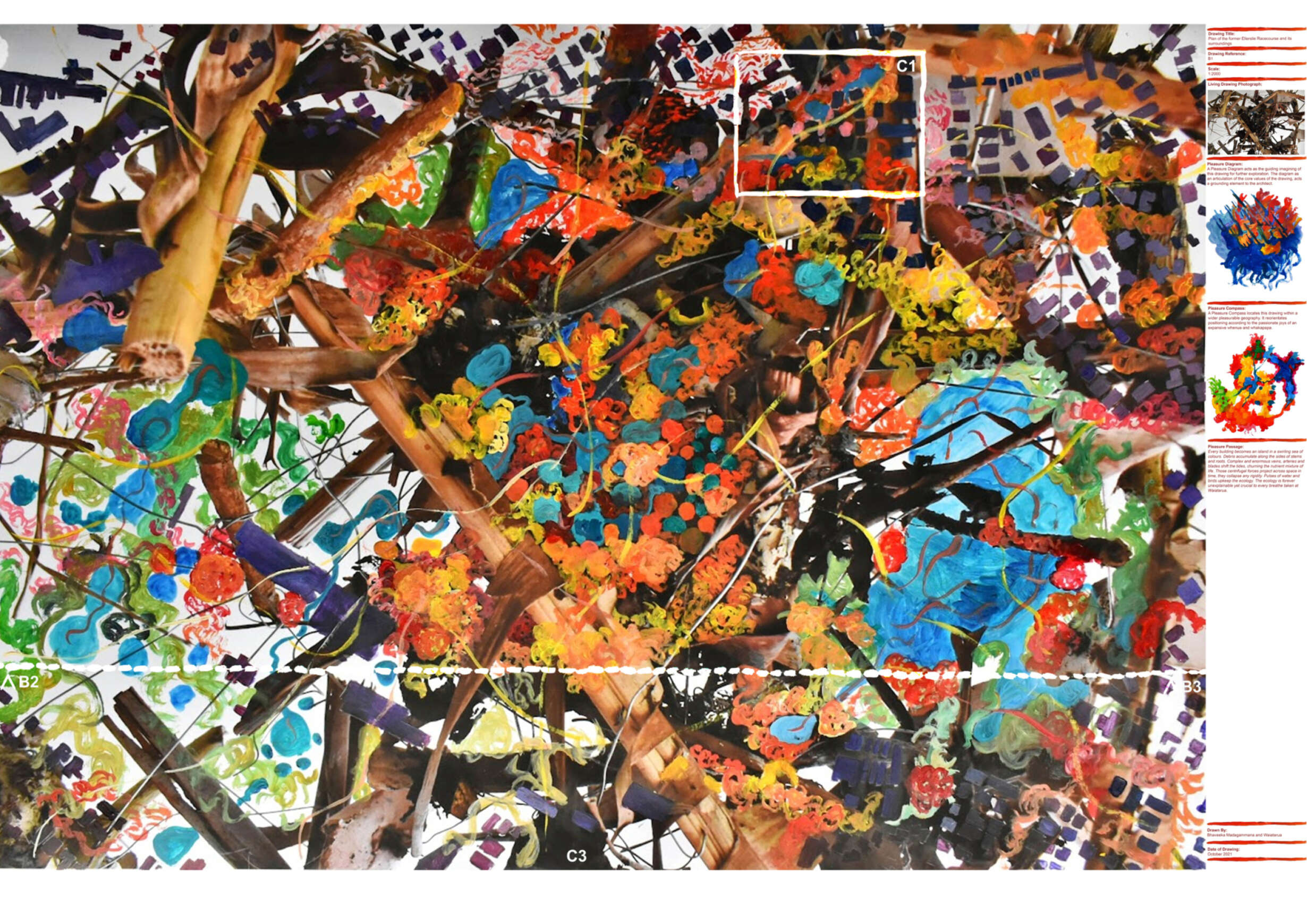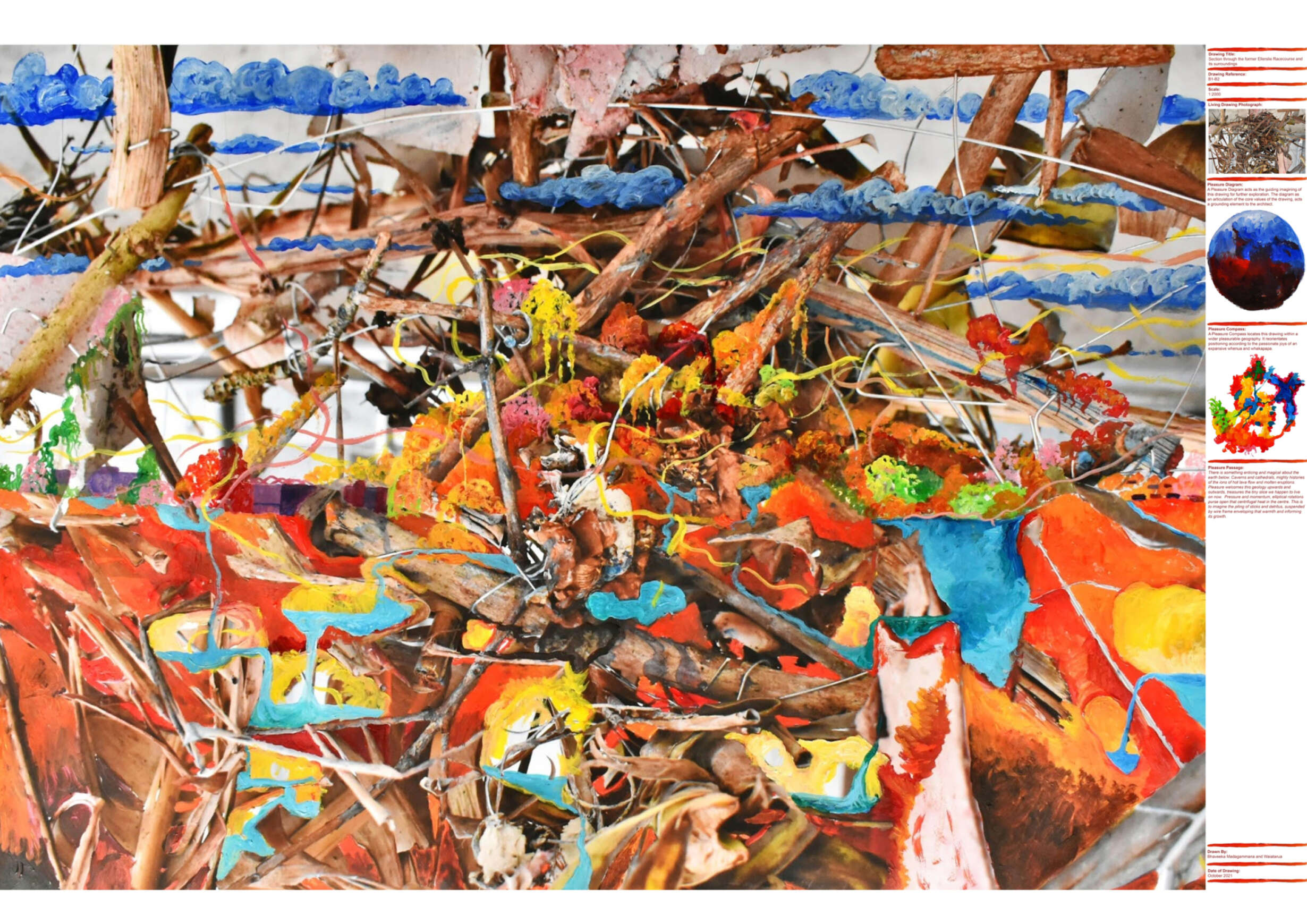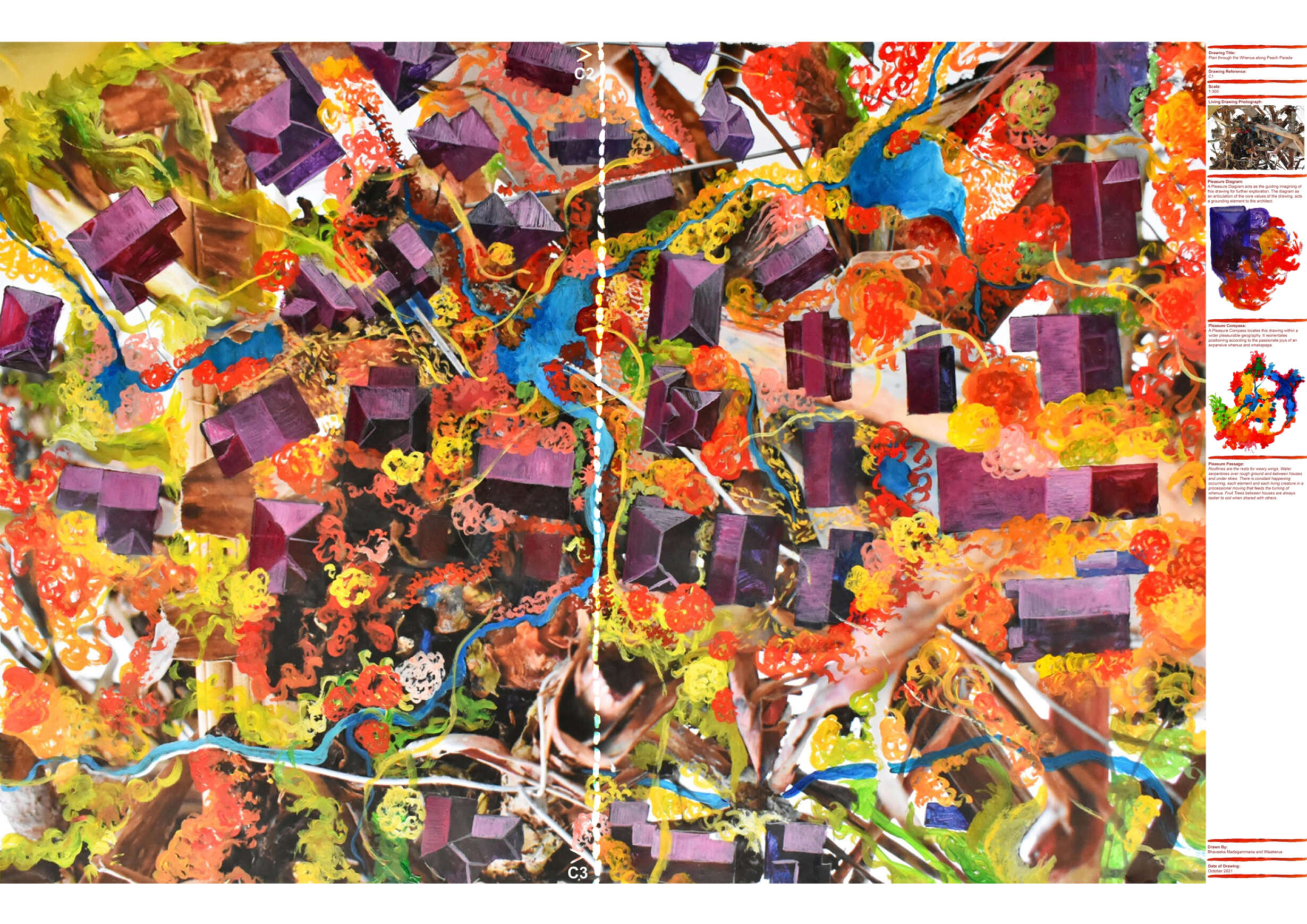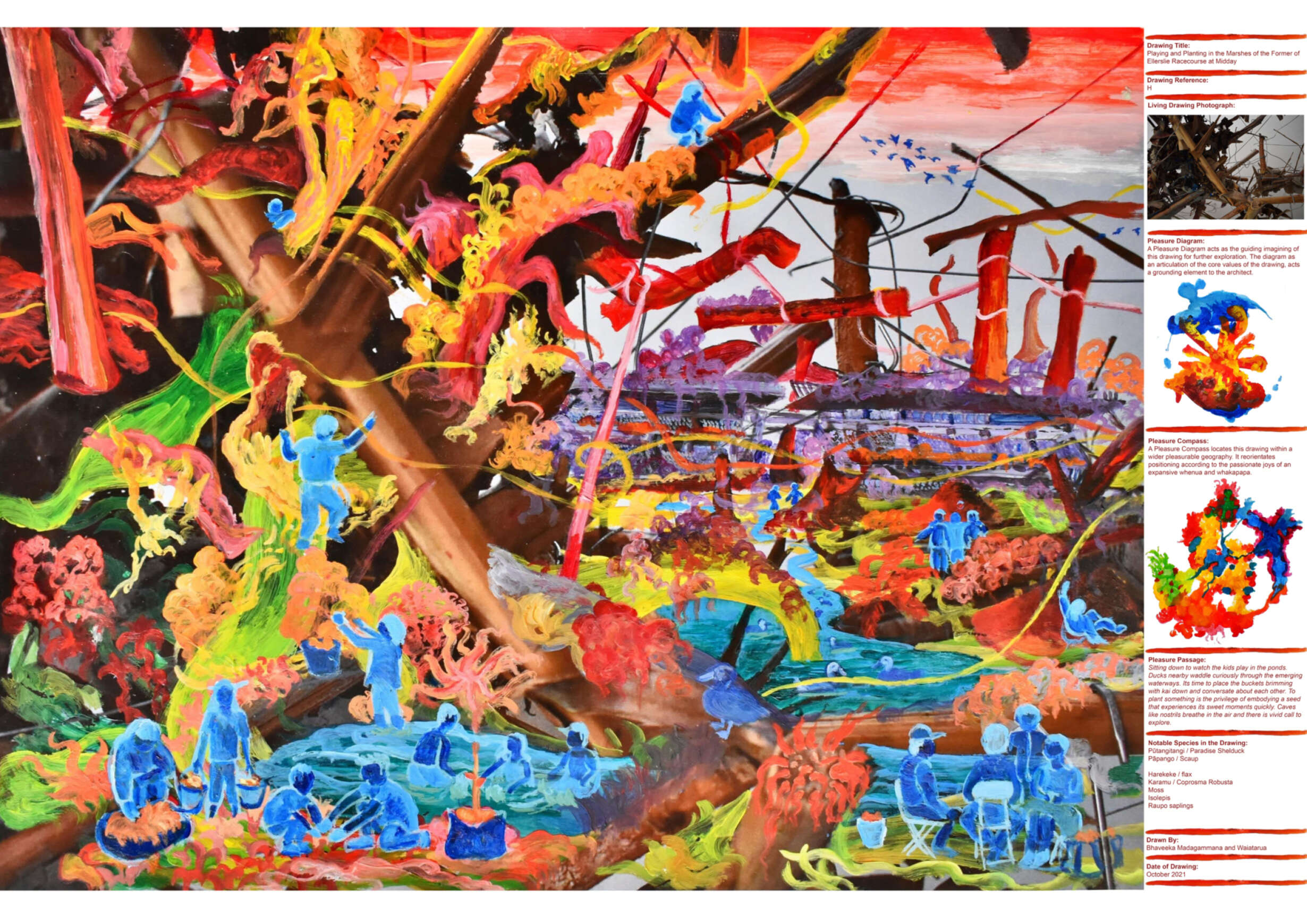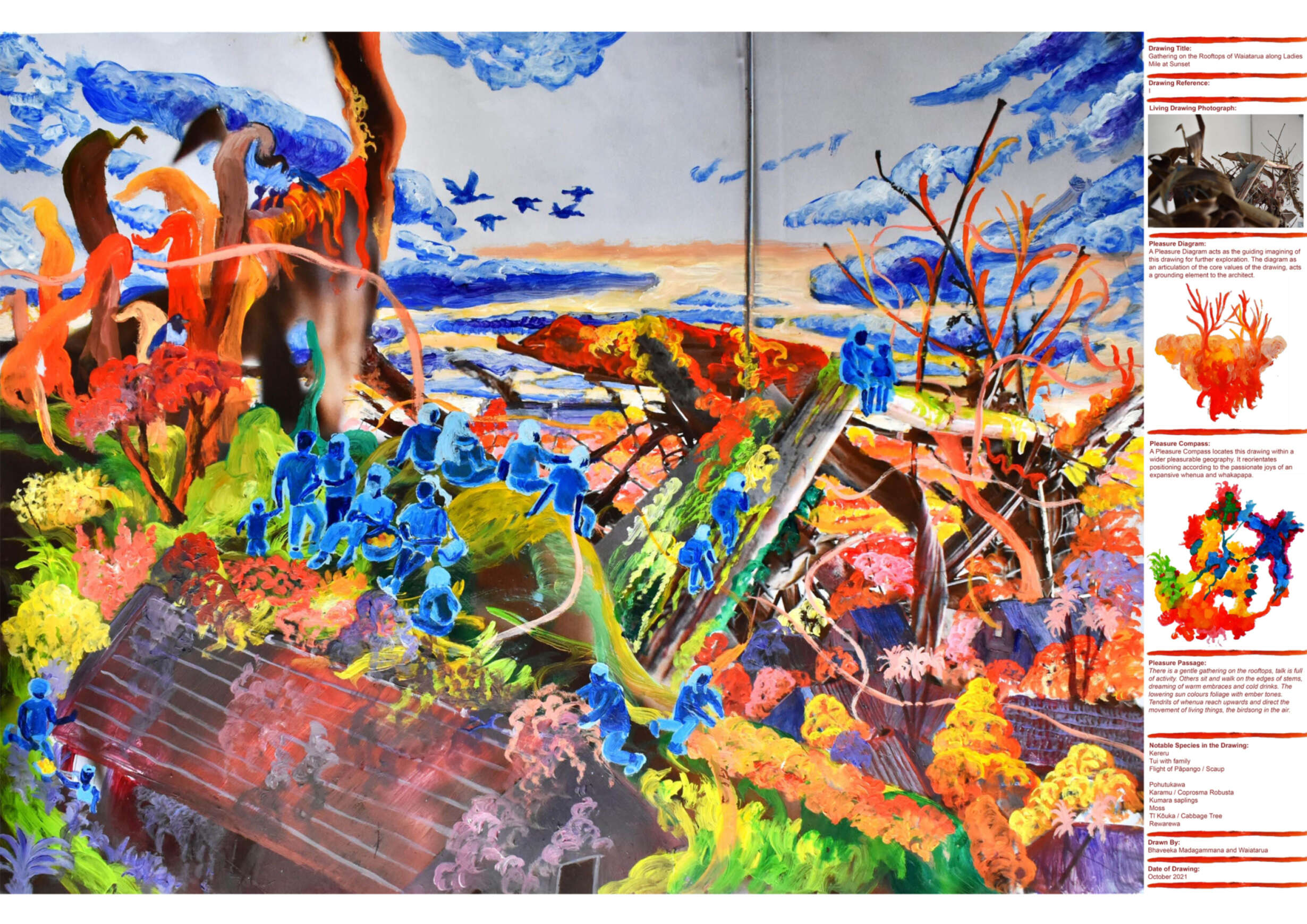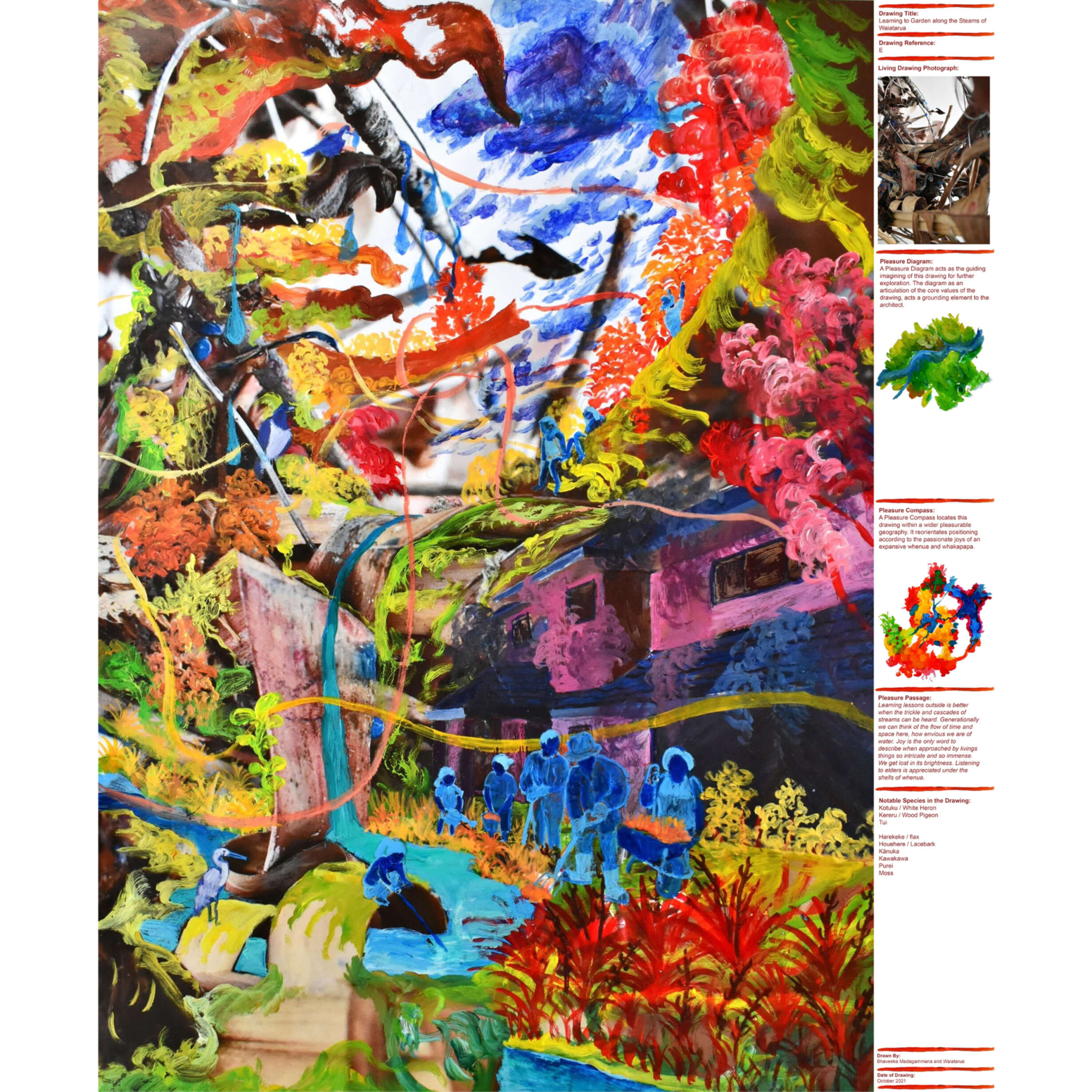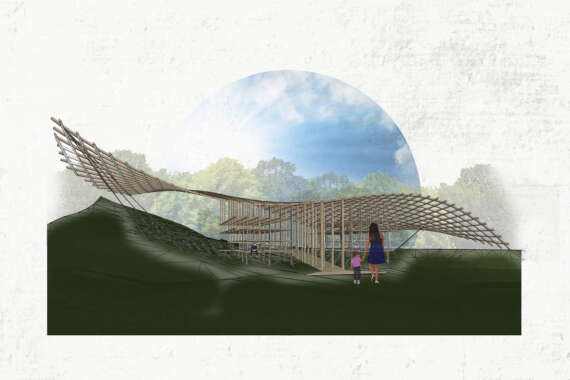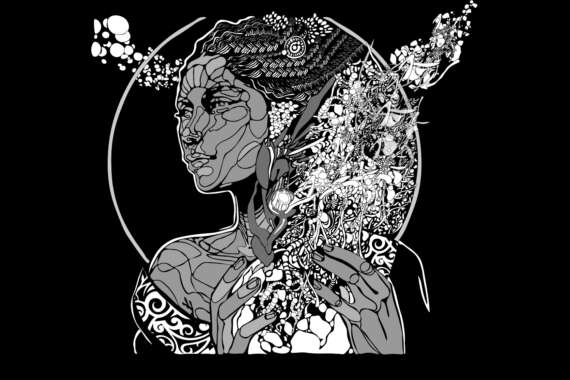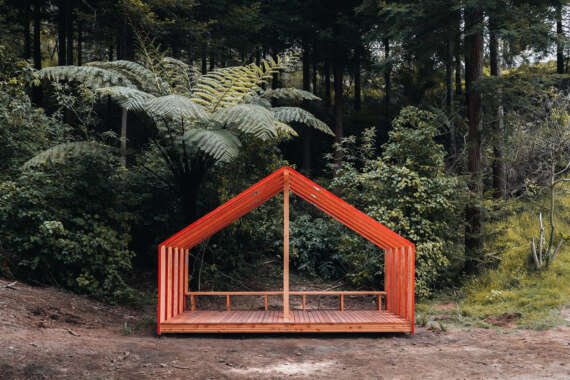A Pleasurable Methodology: Cultivating with Waiatarua
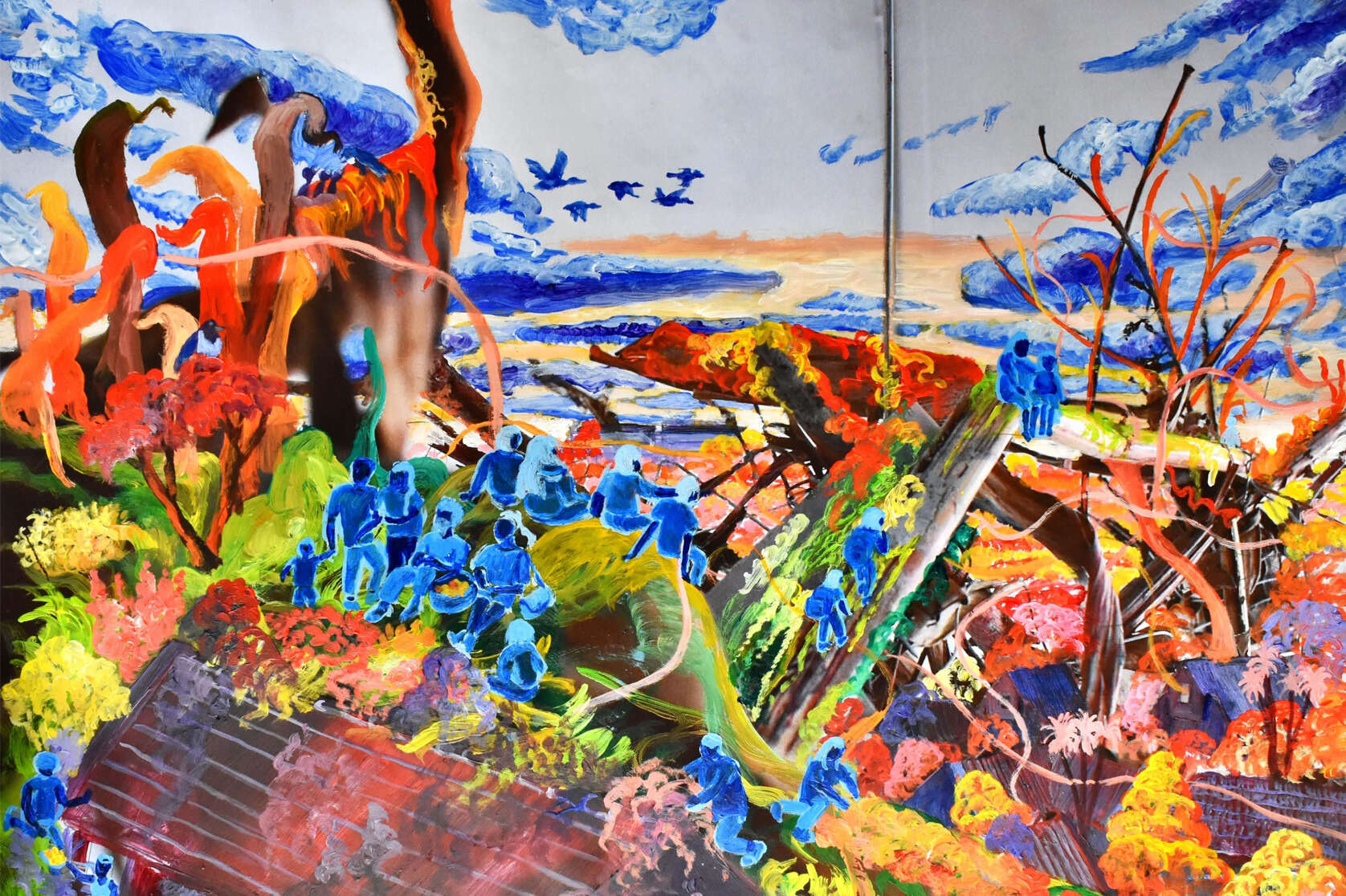
A Pleasurable Methodology is an alternative architectural practice that works by proposing pleasure and whenua, with her ineffable complexities, as ways knowing and living with the earth to create more equitable spaces. Drawings envision a life where communal passions and joys are touched and informed by a completely encompassing living geography. Picnics, gardening, planting, the cultivation and growth of sustenance for future generations occur alongside and is made sustainable by travelling birds and native flora growing in every direction.
This methodology asserts that by following its methods, we can overturn our current geographies and create spaces that listen to the cosmic whakapapa inherent to all whenua of Tāmaki Makaurau.







